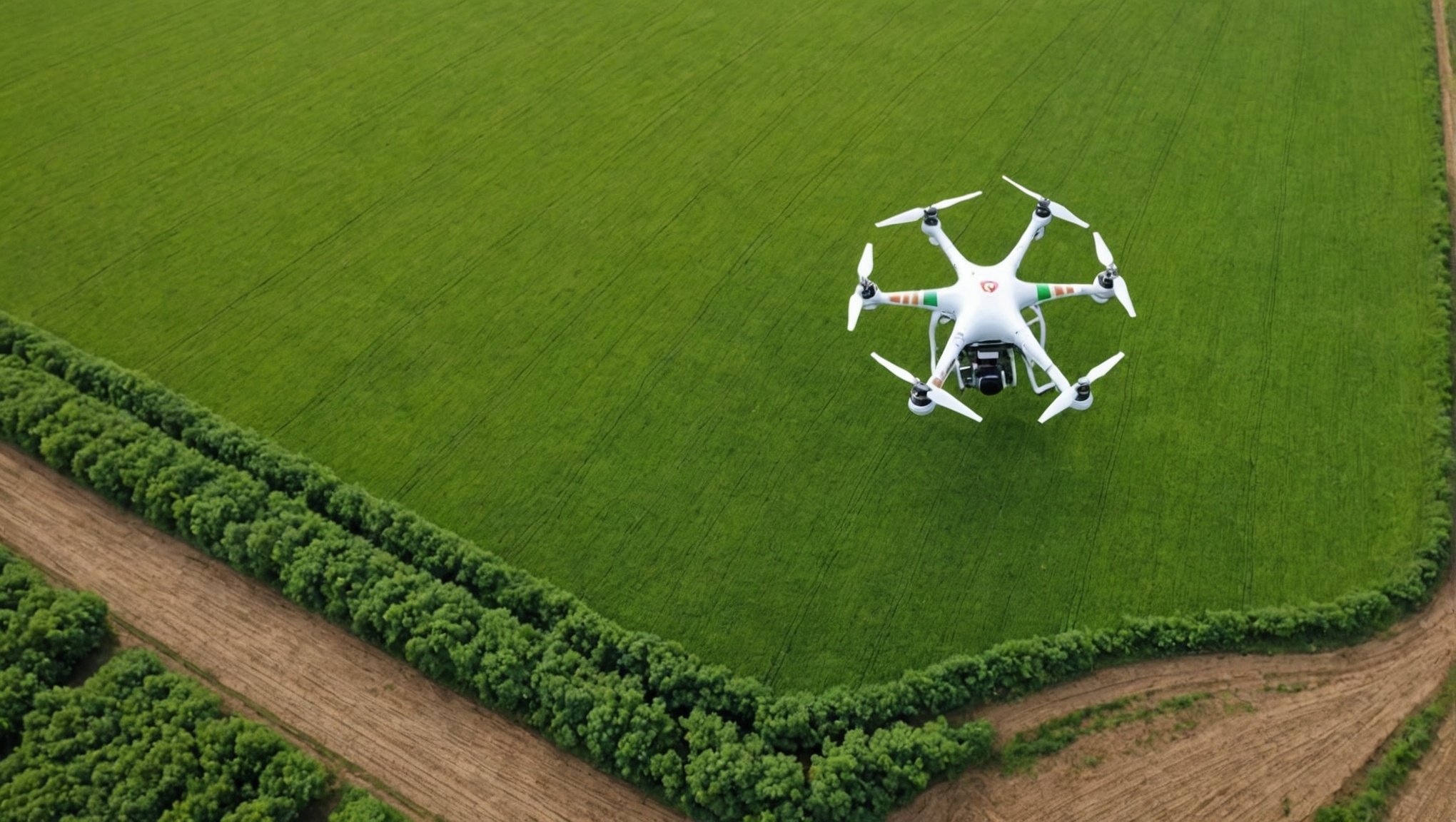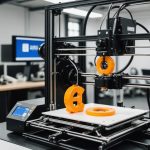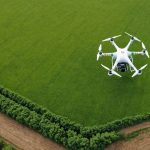Drones are revolutionizing agriculture, particularly in the UK, by enhancing precision farming techniques. Farmers harness advanced aerial technology to monitor crop health, optimize irrigation, and reduce chemical usage. This shift not only boosts productivity but also promotes sustainable practices. As the agricultural sector grapples with challenges like climate change and population growth, drones offer innovative solutions. Explore how these unmanned aerial vehicles unlock new possibilities for farmers looking to streamline operations and achieve better yields.
Overview of Drone Technology in Agriculture
Drone technology has revolutionized the agricultural landscape, offering innovative solutions that significantly enhance precision farming. This technology involves unmanned aerial vehicles (UAVs) equipped with various sensors and cameras, providing a bird's-eye view of farmland. The evolution of drone technology in agriculture has been marked by rapid advancements in sensor capabilities and data processing, allowing farmers to monitor and manage their crops with unprecedented accuracy.
In parallel : Boosting Sustainability: Effective Eco-Friendly Strategies for UK Luxury Hospitality Brands
Types of Drones Used in UK Farming
In the UK, a variety of drones are employed to meet the specific needs of agricultural operations. These include fixed-wing drones, which are ideal for covering large areas quickly, and rotary-wing drones, which offer greater maneuverability and are perfect for detailed inspections. Each type of drone brings unique advantages to precision farming, enabling farmers to select the best fit for their particular requirements.
Key Features and Capabilities
Drones used in agriculture are equipped with several key features that enhance their utility in precision farming. These features include high-resolution cameras for capturing detailed images, multispectral sensors for assessing crop health, and GPS for accurate mapping. The ability to gather and analyze data in real-time allows farmers to make informed decisions, ultimately improving crop yields and reducing resource wastage.
Topic to read : Unlocking Cybersecurity Awareness: The Most Impactful Training Programs for UK Businesses
- High-resolution cameras: Capture detailed imagery for monitoring crop health.
- Multispectral sensors: Provide insights into plant health and soil conditions.
- GPS technology: Ensures precise mapping and navigation.
By integrating these technologies, drone technology in agriculture supports sustainable farming practices and enhances productivity, proving to be an indispensable tool for modern farmers seeking to optimize their operations.
Benefits of Drones in Precision Farming
Exploring the advantages of drone technology reveals its transformative impact on precision farming practices. Drones have become essential tools for modern agriculture, enhancing efficiency and decision-making.
Increased Efficiency in Crop Monitoring
Drones significantly boost efficiency in crop monitoring by providing rapid and comprehensive coverage of farmland. This swift data collection allows farmers to identify issues such as pest infestations or water stress early, enabling timely interventions. The ability to monitor large areas quickly means that farmers can allocate their time and resources more effectively, focusing on areas that need immediate attention.
Enhanced Data Collection for Informed Decision-Making
The data collection capabilities of drones are unparalleled. Equipped with advanced sensors, drones gather detailed information on crop health, soil conditions, and environmental factors. This data is crucial for making informed decisions about planting, irrigation, and fertilization. By analyzing this information, farmers can tailor their strategies to optimize yields and improve overall farm productivity.
Cost Savings and Resource Optimization
Drones contribute to significant cost savings by enabling targeted interventions. Instead of applying resources uniformly across the entire farm, drones help identify specific areas that require treatment. This targeted approach reduces waste and lowers the cost of inputs like water, fertilizers, and pesticides. Consequently, farmers can achieve better results with fewer resources, promoting sustainable farming practices.
- Efficiency: Rapid data collection and analysis
- Data Collection: In-depth insights for strategic planning
- Cost Savings: Targeted interventions reduce waste
By integrating drones into their operations, farmers can harness the full potential of precision farming, leading to increased productivity and sustainability.
Case Studies of Drone Use in UK Agriculture
Examining real-world examples of drone technology in UK agriculture showcases its transformative potential. These case studies highlight how drones have been successfully integrated into various farming practices, offering valuable insights into their practical applications.
Successful Implementation in Crop Management
In the realm of crop management, drones have proven to be indispensable. A notable case study involves a large-scale farm in East Anglia that integrated drones to monitor wheat crops. By using drones equipped with multispectral sensors, the farm could identify areas affected by disease earlier than traditional methods allowed. This early detection enabled targeted treatment, reducing the spread of disease and improving overall crop health.
- Multispectral sensors: Early disease detection
- Targeted treatment: Minimized crop loss
- Improved crop health: Enhanced yield quality
Innovations in Livestock Monitoring
Drones are not limited to crop management and have made significant strides in livestock monitoring. A farm in Yorkshire implemented drones to track cattle movement and health. Equipped with thermal imaging cameras, these drones provided real-time data on animal body temperatures, helping farmers detect illnesses early. This proactive approach has improved animal welfare and reduced veterinary costs.
- Thermal imaging: Real-time health monitoring
- Early illness detection: Enhanced animal welfare
- Cost reduction: Lower veterinary expenses
Examples of Yield Improvement
Yield improvement is another area where drone technology has shown significant impact. In a trial conducted in the Midlands, drones were used to optimize irrigation schedules by analyzing soil moisture levels. This precise irrigation management led to a 20% increase in crop yield, demonstrating the potential of drones to enhance productivity.
- Soil moisture analysis: Optimized irrigation
- 20% yield increase: Greater productivity
- Precision farming: Efficient resource use
These case studies underscore the versatility and effectiveness of drones in UK agriculture, proving them to be a valuable asset in modern farming techniques.
Practical Advice for Implementing Drones in Farming
Implementing drone technology in farming requires careful planning and execution. This section provides practical steps for effective drone implementation in agriculture.
Selecting the Right Drone and Technology
Choosing the appropriate drone is crucial for successful drone implementation. Considerations include the type of crops, farm size, and specific needs such as multispectral imaging or thermal sensing. Farmers should evaluate drones based on their sensor capabilities, flight time, and ease of use. A comparison table can help in decision-making:
| Feature | Fixed-Wing Drones | Rotary-Wing Drones |
|---|---|---|
| Coverage Area | Large | Moderate |
| Maneuverability | Limited | High |
| Ideal Use | Crop monitoring | Detailed inspections |
Training and Skill Development
Proper training is essential for maximizing the benefits of drone technology. Farmers and staff should undergo comprehensive training programs to develop necessary skills. These programs should cover drone operation, data analysis, and maintenance. Investing in ongoing education ensures that users remain proficient as drone technology evolves.
Integration of Drone Data with Existing Farming Practices
Integrating drone data into existing farming practices enhances decision-making. Farmers should establish systems to seamlessly incorporate collected data into their operations. This includes using software that can process and analyze data efficiently. By aligning drone data with traditional methods, farmers can optimize resource use and improve yield outcomes.
- Drone Implementation: Careful planning and execution
- Skill Development: Training for effective use
- Data Integration: Enhancing traditional practices
By following these steps, farmers can effectively implement drone technology in their operations, leading to improved productivity and sustainability.
Challenges and Regulatory Considerations
Navigating the complex landscape of drone regulations and farming challenges.
Regulatory Frameworks Governing Drone Use
The use of drones in agriculture is subject to a comprehensive set of regulatory frameworks. In the UK, the Civil Aviation Authority (CAA) oversees these regulations, ensuring that drones are operated safely and responsibly. Farmers must adhere to rules regarding drone registration, pilot certification, and operational limitations. Understanding these regulations is crucial for avoiding legal issues and ensuring compliance.
Privacy and Safety Concerns
Privacy and safety are significant concerns when deploying drones in agriculture. Drones equipped with cameras and sensors can inadvertently capture images of neighboring properties, raising privacy issues. To address this, operators should follow guidelines on data protection and obtain necessary permissions. Safety is also paramount, as drones can pose risks to people and livestock if not operated correctly. Implementing safety protocols and conducting regular maintenance checks can mitigate these risks.
Technical Challenges and Limitations
Despite their advantages, drones in farming face several technical challenges. Battery life is a common limitation, restricting the duration of flights and the area that can be covered. Additionally, adverse weather conditions can affect drone performance, leading to data inaccuracies. Farmers must also contend with the complexity of data analysis, requiring specialized software and skills.
- Battery Life: Limits flight duration
- Weather Conditions: Impacts performance
- Data Complexity: Requires specialized skills
By understanding these challenges and adhering to regulatory frameworks, farmers can effectively integrate drones into their operations, maximizing their benefits while minimizing potential drawbacks.
Future Developments in Drone Technology for Agriculture
Exploring the future of drones in agriculture reveals exciting possibilities and innovations. As technology continues to evolve, drones are set to play an even more critical role in sustainable farming practices.
Emerging Technologies and Innovations
The future of drones in agriculture is closely tied to emerging technologies that promise to enhance their capabilities. Innovations such as AI and machine learning are poised to transform how drones operate. These advancements will enable drones to autonomously analyze vast amounts of data, improving decision-making processes for farmers. For instance, AI-driven drones could predict crop yields with greater accuracy, allowing for more efficient resource allocation.
- AI Integration: Autonomous data analysis
- Machine Learning: Predictive analytics
- Enhanced Capabilities: Improved decision-making
Predictions for Sustainable Farming
As the agricultural sector moves towards sustainability, drones are expected to become indispensable tools. The future of drones includes their integration into sustainable farming practices, where they can minimize environmental impact. By optimizing water usage and reducing chemical applications, drones contribute to more eco-friendly farming. Predictions suggest that drones will be central to precision agriculture, helping farmers achieve higher yields with fewer resources.
"Drones will be the linchpin in achieving sustainable farming goals." – Agricultural Technology Expert
Potential for AI and Machine Learning Integration
Integrating AI and machine learning into drone applications offers significant potential. These technologies enable drones to learn from past data, enhancing their ability to identify patterns and anomalies in crop health. This capability is crucial for early detection of issues, allowing for proactive interventions. As drones become more sophisticated, their role in agriculture will expand, providing farmers with powerful tools to enhance productivity and sustainability.
| Feature | Current Capability | Future Potential |
|---|---|---|
| Data Analysis | Manual | Autonomous |
| Resource Allocation | Reactive | Predictive |
| Environmental Impact | Moderate | Minimal |
The future of drones in agriculture is bright, with emerging technologies and innovations paving the way for more efficient and sustainable farming practices. As AI and machine learning continue to develop, their integration into drone technology will unlock new possibilities, ensuring that drones remain at the forefront of agricultural advancements.











